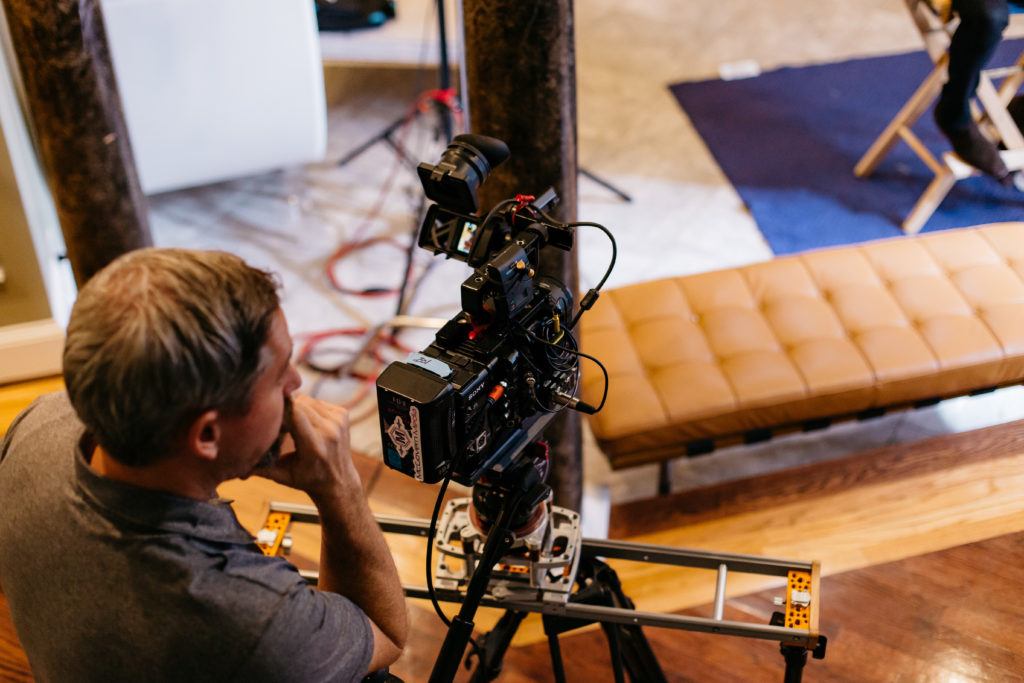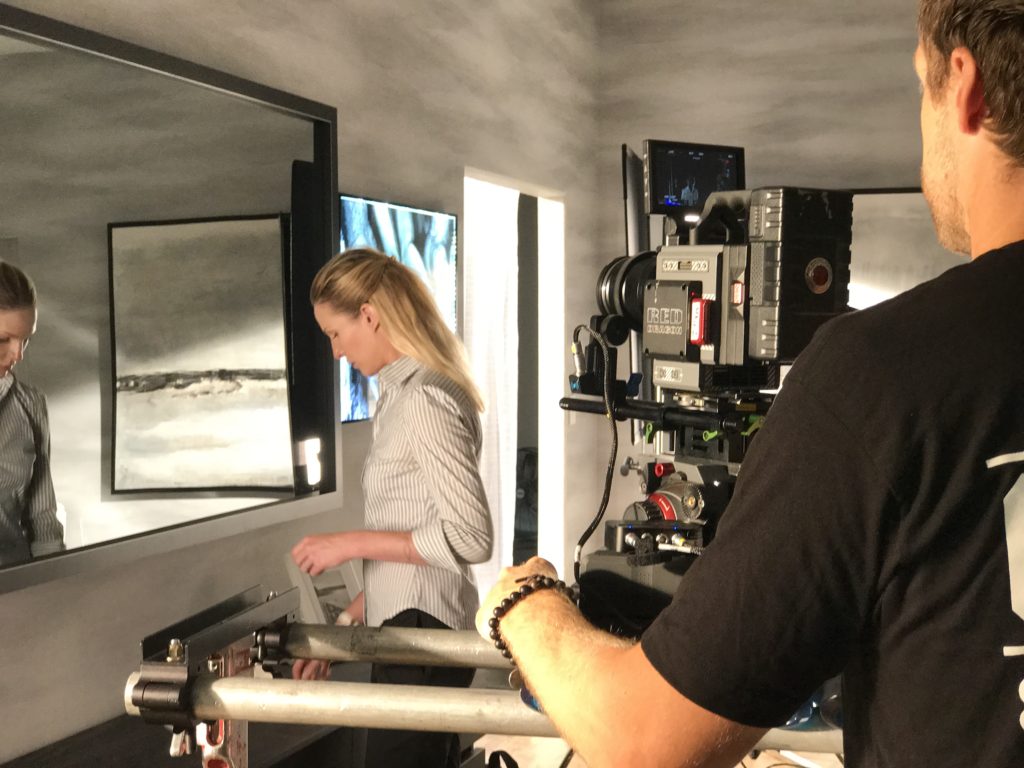
What is a Dolly Shot & What is it Used for in Film?
The dolly shot is one of the most powerful filmmaking techniques used to tell a story and achieve cinematic success. You’re probably wondering “What is a dolly shot & what is it used for in film?” We’re showing you how they work and what they’re used for in the film world. Follow along to find out how you can pull off this powerful cinematic technique on your own and produce captivating shots that tell your story in awe inspiring detail.

What is a Dolly Shot?
The dolly shot is a camera movement that takes place when a camera is mounted to a dolly cart to run along a rail track towards, away from or alongside the subject of the scene. Dolly shots are an essential filmmaking technique that allows cinematographers to capture creative shots and scenes in a smooth and controlled movement in which the camera appears almost to be floating in front of, behind or alongside the character to capture smooth movements throughout the scene.
Types of Dolly Shots
There are several types of dolly shots. The camera dolly and the camera settings that are used during the shot play a key role in the types of shots. The most common types of dolly shots include:
- Dolly In and Dolly Out Shots
- Dolly Zoom Shots
- Dolly & Secondary Camera Movement Shots
- Tracking Dolly Shots
- Long Tracking Dolly Shots
- 360 Dolly Shots
- Spike Lee Dolly Shots

Dolly In & Dolly Out Shots
Dolly in and dolly out shots are used to reference the movement of the camera toward or away from the subject. Additional camera movements, such as the moving of the camera on a tilted angle up or down will be minimal with a dolly in or dolly out shot. The primary focus is that the camera movement keeps the shot in focus despite movements away or toward.
Dolly Zoom Shots
The dolly zoom shot is often referred to as a zolly shot. This type of dolly shot is the most commonly used and involves the adjustment of camera zoom during the movement of the dolly such that the foreground subject remains the same size as the background narrows or appears to open. To achieve the dolly zoom shot the cinematographer will dolly to the subject and zoom the camera out at the same time or they will dolly away from the subject and zoom the camera in at the same time.
Dolly & Secondary Camera Movement Shots
To achieve dolly and secondary camera movement shots such as dolly and panning or tilting of the camera, the cinematographer will perform both the movement on the dolly and the movement of the camera angle at the same time. This type of shot is often used to bring attention to a particular area of the scene when the subject is moving.
Tracking Dolly Shots
A tracking dolly shot involves the use of a dolly to scroll along beside the subjects of the scene as they move from one location to the next. These types of dolly shots are often conducted with a rail or may be performed without a dolly by a Steadicam operator. To achieve tracking shots the cinematographer will track the subject through the scene.

Long Tracking Dolly Shots
The long tracking dolly shot is a means of capturing a long take in which the dolly moves through the scene without a visible cut in the footage. Usually this shot follows an actor through the scene but the need to get everything perfect with a single shot makes this a very difficult technique to achieve. Rarely are long tracking dolly shots used as Steadicams allow for the complicated transitions from one area to the next throughout the scene to be achieved with ease when compared to a dolly and rails. However, pros can capture long tracking dolly shots if rail length allows for such.
360 Dolly Shots
The 360 dolly shots take a 360 degree circle around the subject to create the appearance of the subject and background full view. A circular rail track is used to capture the 360 dolly shot and the subject is placed in the center of the track. Because these shots can be complicated to achieve, a Steadicam may be used instead to capture 360 dolly shots with less complication.
Spike Lee Dolly Shots
Similar to the original tracking dolly shot, the Spike Lee Dolly Shot involves placing both the camera and the subject on a dolly. Both move flawlessly toward or away from each other on the track as the footage is captured for a powerful effect.

When is the Dolly Shot Used in Film?
Now that you know all the different types of dolly shots, let’s take a look at when dolly shots are used in film. The purpose of the dolly shot is to produce a variety of emotional meanings and strengths in film. Common reasons to use the dolly shot include:
- Bringing the viewer’s attention to various elements or actors on the scene. The dolly shot can essentially make the footage appear as if the viewer is leaning in to see what is happening.
- To attract the viewer to a specific area of the scene to produce a dramatic effect that the viewer cannot ignore.
- To dolly back so that a full, more visible view of the location setting of a scene can be better seen and appreciated.
- To add depth to an otherwise flat appearing location. The dolly can be used to extend back or to edge closer to the scene to create depth.
- To produce a sense of realization or epiphany of character as the dolly zooms in on a character as they are thinking or just realizing something important.

Capturing Dolly Shots on a Budget
Dolly shots are used in all different situations throughout film production to capture objects and subjects on film in a variety of different ways. Before we had all of this advanced dolly equipment, and for indie filmmakers and low-budget cinematographers that don’t have advanced dolly equipment, several options exist to produce dolly shots without special equipment:
- A wheelchair is one of the simplest pieces of equipment that can be used to capture a dolly shot effect. The wheels allow for the camera operator to smoothly move toward or away from the subject with ease. Capture the Spike Lee Dolly effect with two wheelchairs as the cameraman and subject move away from or toward one another.
- A vehicle can also be used to capture dolly shots. Although this may be a little bit more dangerous and difficult than a wheelchair, vehicles are used in film production to produce dolly effects and shots that, with some image stabilization later on, can be used for a wide variety of different uses.
- Another low budget means of capturing the dolly shot is roller skates or roller blades. Cinematographers grab their skates and get moving. Footage is captured as the cinematographer skates toward, away from or alongside the subject. This method, although powerfully effective, is a bit risque if you’re not an advanced skater!
- Drones are another option for capturing dolly shots on a budget, although a good drone isn’t cheap. Dolly options with drones allow for limitless footage capture from all angles. Experienced drone flyers and cinematographers find that the ability to use a drone both indoors and out makes it an excellent piece of equipment for various forms of video production.
Check out our article on stabilizing your shot on a budget.


